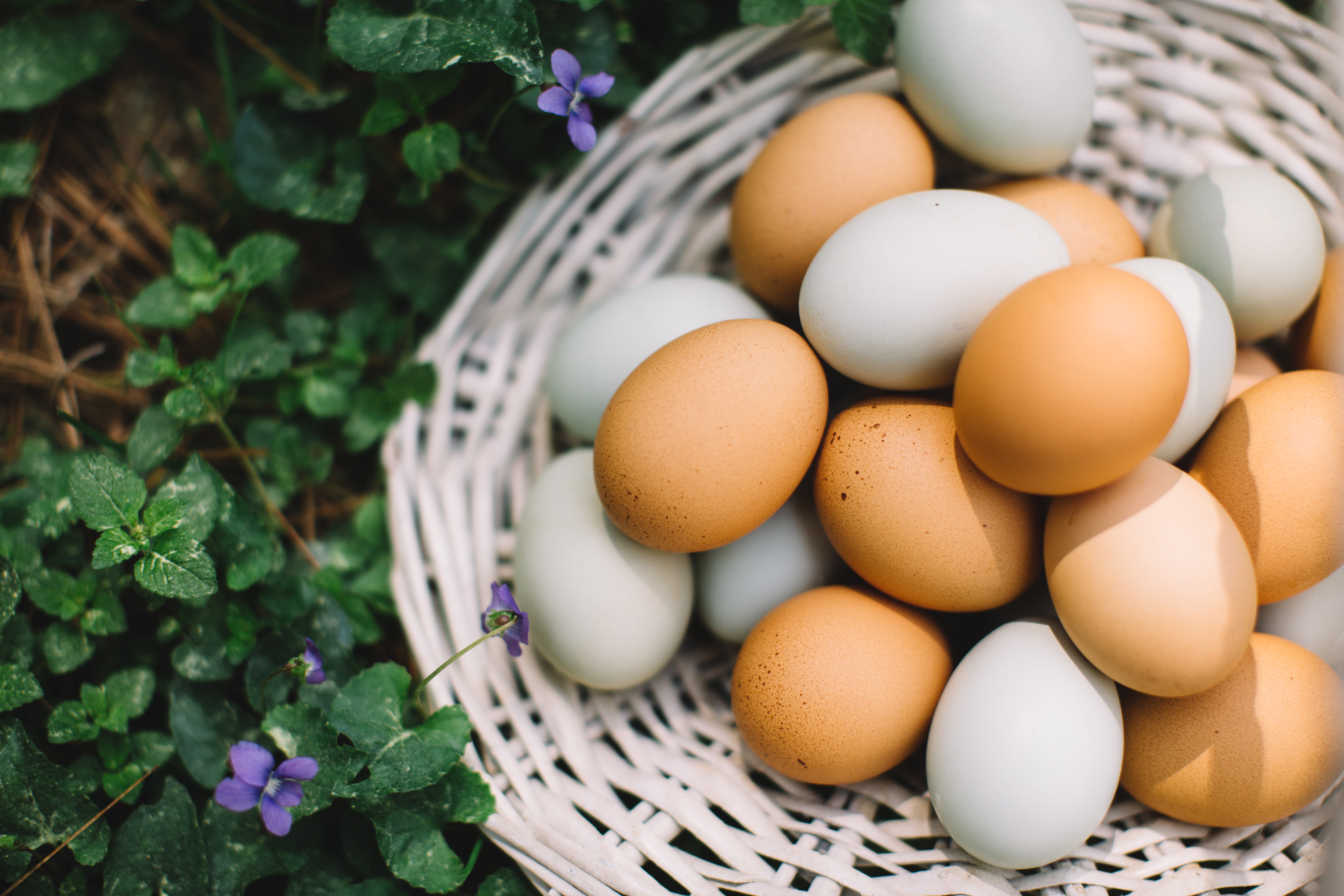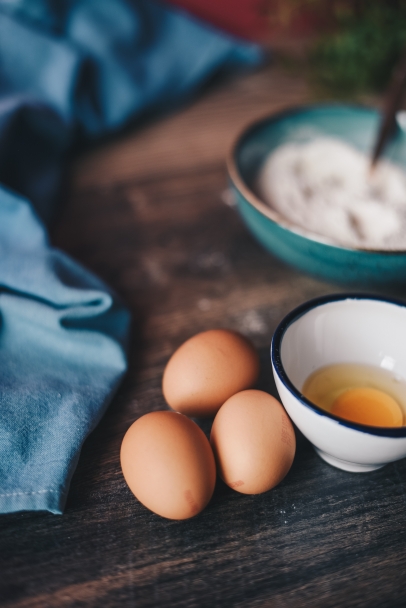An Egg-cellent Choice
From conventional brown and white to heirloom pastels, eggs are prevalent in kitchens across the globe. An integral cog for many recipes, yet sufficient to make a meal in and of themselves, eggs are a nutritious whole food beloved by many, my family included. Come spring, they quickly become the centre of attention, especially during Easter festivities—this is a perfect time to get to know them a little better.
More labels, more choices
Egg consumption is on the rise in Canada, as are the choices. Over the last decade, carton labelling has increased dramatically to reflect the diverse range of eggs available—selections aren’t limited to size and colour any longer. In addition to the omnipresent Canada Grade A label, Canadians can expect to see the type of egg (housing method), feed, country of origin, supplementary quality assurance labels and other terms such as “omega-3” or “hormone-free”—it can be a tad overwhelming.
The Grade A label is important because it indicates that fresh eggs meet the Canadian standards for sale. Buying quality Canadian eggs is important to many consumers; however, while many Grade A eggs are, in fact, produced in Canada, this label also applies to imported eggs. Created in 2019, the EQA™ or Egg Quality Assurance™ label makes it easier for consumers to identify eggs that were not only graded but produced in Canada under the country’s world-class standards for quality, food safety and animal welfare. Moreover, hormones (steroids) are not approved for use in egg laying hens in Canada; any labelling to this effect is redundant.
Types and the growing demand for cage-free
There are five types of eggs commercially available, and each type refers to the housing method: conventional caged, enriched, free-run, free-range and organic. How the hens are housed is a growing concern, specifically for British Columbians. More and more consumers in the province are demanding cage-free varieties (free-run, free-range and organic) and, consequently, British Columbia now leads the nation in cage-free production. B.C. is also the only province to set strict, mandatory standards for free-range producers—hens are not only provided indoor nesting sites, but quality access to the outdoors for a minimum of six hours a day. Organic eggs are always my number one choice, though—hens from organic farms are provided even more space to roam and fed a certified organic diet; they are never given antibiotics.
Approximately 10% of B.C.’s egg farms are located on Vancouver Island, with the majority of Island-produced eggs sold under the name Island Gold. Island Gold varieties are available province-wide, which includes conventional and cage-free varieties, including organic.
Nutrition, taste & longevity
Regardless of shell or yolk colour or how the hens are raised, the taste, texture and nutritional value of eggs remains relatively consistent (unless the feed has been enriched with vitamins or omega-3—these eggs are labelled accordingly). Eggs are high in protein and contain vitamins A, D, E, B12, folate, selenium, iron, along with choline, lutein and zeaxanthin. The exception in the taste and texture category may be the handsomely coloured heirloom eggs, which can have larger, more unctuous tasting yolks, according to some. However, heirloom eggs are largely ungraded and therefore not available commercially.
To maintain freshness and quality, eggs should be stored in the coldest part of the refrigerator and used by the best before date. Because eggshells are porous and fragile, keep them in the original carton to reduce odour absorption and prevent breakage. And always discard cracked or broken eggs.
A myriad of uses
While the industry has changed over time, what hasn’t changed is the versatility eggs provide—there is always a new recipe to try or a fresh way to enjoy them. They pair beautifully with almost any ingredient from fresh or cooked greens, mushrooms, tomatoes, non-sweet fruits and herbs to meats, cheeses, pesto or grains. Eggs create the necessary base for luxurious confections like flan, pavlova, brioche or soufflé and no millennial brunch-fest would be complete without a jammy poached egg on toasted sourdough.
With a diverse array of uses, eggs should never be reserved solely for breakfast; shakshuka or frittatas for dinner are perfectly acceptable and hard boiled eggs make a convenient mid-afternoon bite. A cherished recipe I make this time of year is a sweet scrambled pancake from Austria known as kaiserschmarrn—a fluffy egg batter, cooked until golden and sprinkled with powdered sugar. Served alongside fresh fruit, purées or compotes, kaiserschmarrn is entirely too easy to whip up for a light brunch or dessert this season.
|
Resources BC Egg Farmers: bcegg.com Island Eggs: islandeggs.com Egg Quality Assurance Program: eggquality.ca Egg Farmers of Canada: eggfarmers.ca |





